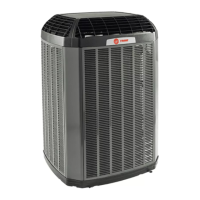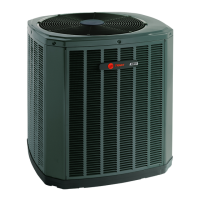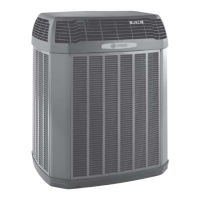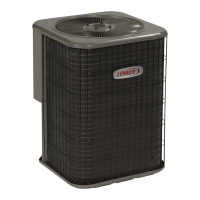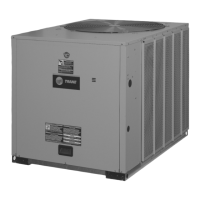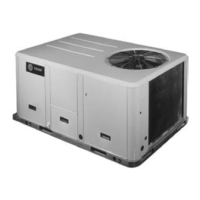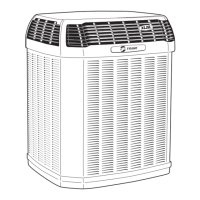10
18-BC92D1-1F-EN
Table 10. Reuse Existing Refrigerant Lines
CCAAUUTTIIOONN
RREEFFRRIIGGEERRAANNTT!!
FFaaiilluurree ttoo iinnssppeecctt oorr uussee pprrooppeerr sseerrvviiccee ttoooollss mmaayy
rreessuulltt iinn eeqquuiippmmeenntt ddaammaaggee oorr ppeerrssoonnaall iinnjjuurryy..
IIff uussiinngg eexxiissttiinngg rreeffrriiggeerraanntt lliinneess mmaakkee cceerrttaaiinn tthhaatt
aallll jjooiinnttss aarree bbrraazzeedd,, nnoott ssoollddeerreedd..
For retrofit applications, where the existing indoor evaporator coil
and/or refrigerant lines will be used, the following precautions should
be taken.
• Ensure that the indoor evaporator coil and refrigerant lines are
the correct size.
• Ensure that the refrigerant lines are free of leaks, acid, and oil.
Important: For more information, see publication number SS-
APG006–EN
Table 11. Refrigerant Line Routing Precautions
Important: Comply with National, State, and Local Codes when isolating line sets from joists, rafters, walls, or other structural elements.
Important: For buried linesets, see publication number SS-APG006–EN.
Important: Take precautions to prevent noise within the building structure due to vibration transmission from the refrigerant lines.
For Example:
• When the refrigerant lines must be fastened to floor joists or other framing in a structure, use isolation type hangers.
• Isolation hangers should also be used when refrigerant lines are run in stud spaces or enclosed ceilings.
• Where the refrigerant lines run through a wall or sill, they should be insulated and isolated.
• Isolate the lines from all duct work.
• Minimize the number of 90° turns.
Table 12. Isolation From Joist/Rafter
8 Feet Maxim um
Side View
8 Feet Maxim um
Joist/Rafter
Isolator
Line Set
Secure Vapor Line from joists using isolators every 8 ft. Secure Liquid Line directly to insulated Vapor Line using tape, wire, or other appropriate
method every 8 ft.
RReeffrriiggeerraanntt LLiinnee CCoonnssiiddeerraattiioonnss
